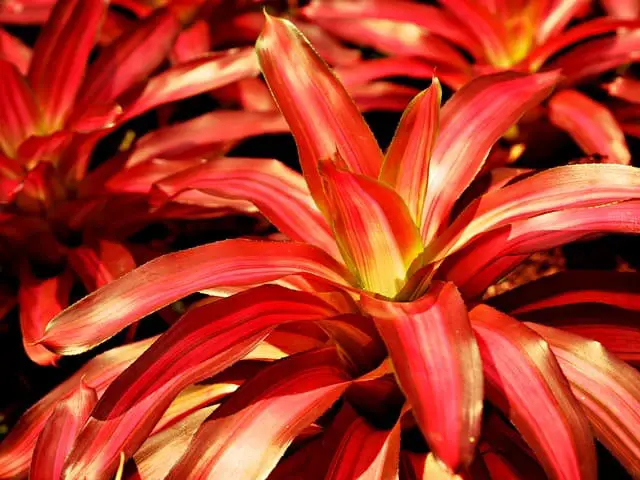Bromeliads are a popular houseplant choice due to their unique appearance and low maintenance requirements. However, one common issue that many bromeliad owners face is browning leaf tips. This can be frustrating, especially when you’re not sure what’s causing the problem.
Understanding bromeliad leaf tips turning brown is the first step in addressing any issues they may have. These plants are native to tropical regions and thrive in high humidity levels of around 50-60 percent. Factors such as watering, light, temperature, soil, and drainage can all impact the health of your bromeliad.
Identifying the problem is key to finding a solution, so it’s important to take a closer look at your plant and its environment to determine what might be causing the brown leaf tips.
Key Takeaways
- Understanding the needs of bromeliads is crucial for their care.
- Browning leaf tips can indicate a watering or humidity issue.
- Proper care and maintenance can help keep your bromeliad healthy and thriving.
Also read:
Understanding Bromeliads
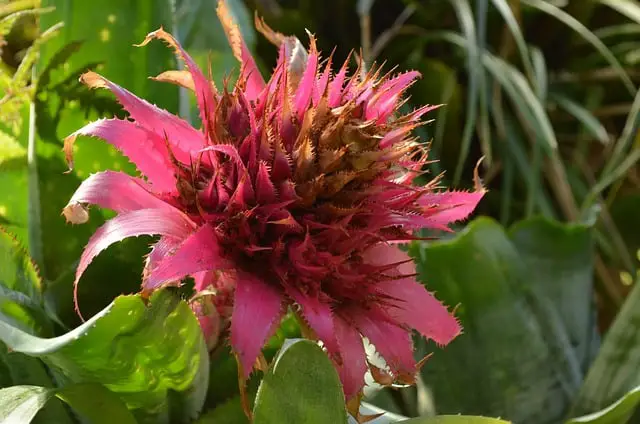
Bromeliads are a family of plants that are native to the tropical regions of the Americas. They are known for their striking foliage and vibrant flowers, which make them a popular choice for indoor and outdoor gardens alike.
Bromeliads are also low-maintenance plants, which makes them a great choice for those who want to add some greenery to their space without spending a lot of time caring for them.
Bromeliads come in a wide variety of shapes, sizes, and colors, but they all share some common characteristics. They are epiphytic plants, which means that they grow on other plants or objects instead of in soil.
This is why bromeliads are often found growing on trees or rocks in their native habitats. Bromeliads also have a unique way of collecting water. They have a central cup or tank in the center of the plant where water collects. This allows the plant to survive in areas where water is scarce.
Caring for bromeliad plants is relatively easy. They prefer bright, indirect light and should be watered when the soil or central cup is dry. Overwatering can cause the roots to rot, so it is important to let the soil dry out between waterings. Bromeliads also benefit from occasional fertilization with a balanced fertilizer.
However, sometimes bromeliad leaves can develop brown tips, which can be a cause for concern. This can be caused by a variety of factors, including underwatering, overwatering, or exposure to direct sunlight. It is important to identify the cause of the problem in order to treat it effectively.
Identifying the Problem
If you notice brown tips on your bromeliad leaves, it may be a sign of a problem. Bromeliad leaf tips turning brown is a common issue that can be caused by various factors, including environmental stress, disease, or improper care. Identifying the underlying cause of the problem is crucial to prevent further damage to the plant.
Brown tips on the leaves of a bromeliad can indicate that the plant is experiencing stress. This can be caused by environmental factors such as low humidity levels, exposure to direct sunlight, or extreme temperatures.
When the plant is stressed, it may start to lose color, wilt, or even die. In some cases, the leaves may curl or droop, which can be a sign of a more severe problem.
Another possible cause of brown tips on bromeliad leaves is disease. Some diseases can cause the roots of the plant to become mushy, which can lead to discoloration and browning of the leaves.
If you suspect that your plant is suffering from a disease, it is important to take immediate action to prevent the spread of the disease to other plants.
Yellow leaves can also be a sign of a problem with your bromeliad. This can be caused by overwatering, underwatering, or exposure to extreme temperatures. If you notice yellow leaves on your plant, it is essential to identify the underlying cause and take corrective action.
Watering and Humidity Issues
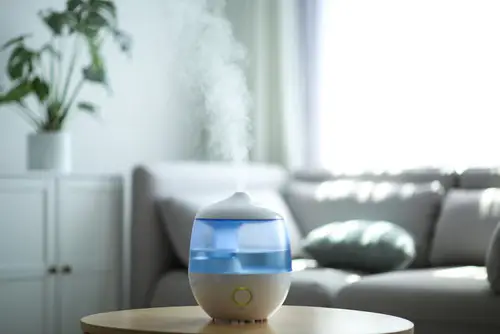
Bromeliads are tropical plants that thrive in humid environments. One of the most common reasons for brown leaf tips is watering and humidity issues.
Underwatering can cause the tips of the leaves to turn brown and dry out. It is important to water bromeliads regularly, but not too frequently. The frequency of watering depends on the humidity levels and the environment in which the plant is growing.
If the air is too dry, the plant may require more frequent watering. On the other hand, if the air is too humid, the plant may not require as much watering.
Overwatering can also cause brown leaf tips, as well as root rot and other issues. It is important to allow the soil to dry out between watering to prevent the roots from becoming waterlogged. Using distilled or rainwater for watering bromeliad plants is recommended, as tap water may contain chemicals that can harm the plant.
Humidity levels are also important for the health of bromeliads. If the air is too dry, the plant may require additional humidity to prevent the tips of the leaves from turning brown. A humidifier or misting the plant can help to increase the moisture in the air around the plant.
Light and Temperature Factors
Bromeliads thrive in bright but indirect light. Direct sunlight can cause the leaves to burn and turn brown, while a lack of light can result in slow growth and poor coloration. It is important to find the right balance of light for the bromeliad plant to grow healthy and produce vibrant leaves.
The ideal temperature range for bromeliads is between 60°F to 80°F (15°C to 27°C). Temperatures above 90°F (32°C) can cause the leaves to dry out and turn brown. On the other hand, temperatures below 50°F (10°C) can cause the leaves to turn yellow and eventually die.
It is essential to maintain a consistent temperature for the bromeliad plant to grow healthy.
Direct light exposure can cause the leaves to turn brown and dry out. If the bromeliad is placed in a location where it receives direct sunlight, the leaves may suffer from sunburn. To prevent this, it is recommended to place the bromeliad in a spot where it receives bright but indirect light.
Full sun exposure can also cause the leaves to turn brown. If the bromeliad is placed in a location where it receives full sun exposure, it is recommended to move it to a spot where it receives less light.
Soil and Drainage Concerns
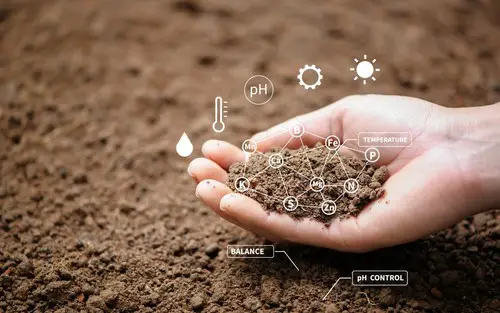
Bromeliads require well-draining soil to prevent root rot, which can cause the tips of the leaves to turn brown. The soil should be a well-draining potting mix that allows water to flow through easily. Garden soil or heavy clay soils should be avoided as they retain too much moisture.
When planting a bromeliad, it is important to ensure that the pot has drainage holes to allow excess water to escape. If the pot does not have drainage holes, the soil can become waterlogged, leading to root rot and brown leaf tips.
It is also important to allow the soil to dry out between watering. Overwatering can cause the soil to become waterlogged, leading to root rot and brown leaf tips. The soil should be allowed to dry out almost completely before watering again.
If a bromeliad is potted in a soil mix that retains too much moisture, the plant may suffer from root rot, which can cause the tips of the leaves to turn brown. To prevent this, a well-draining potting mix should be used. A mix of peat moss, perlite, and vermiculite is a good option for bromeliads.
Pests and Disease
Bromeliads are generally hardy plants, but they can fall victim to pests and diseases.
The most common pests that affect bromeliads are mealybugs, scale, and aphids. These insects feed on the plant’s sap, causing the leaves to turn yellow and brown. They also excrete a sticky substance called honeydew, which can attract other pests like ants.
To prevent pests from attacking your bromeliad, it’s important to keep the plant healthy. Make sure the plant is getting the right amount of light, water, and nutrients.
In addition, keep an eye out for any signs of infestation, such as yellowing leaves or the presence of insects. If you do notice an infestation, you can try to remove the insects manually or use an insecticidal soap to kill them.
In addition to pests, bromeliads can also be susceptible to diseases. The most common disease that affects bromeliads is root rot, which is caused by overwatering. When the plant’s roots are constantly wet, they can start to rot, which can cause the leaves to turn brown and wilt.
To prevent root rot, make sure the plant is potted in well-draining soil and that the pot has drainage holes. In addition, only water the plant when the soil feels dry to the touch. If you do notice signs of root rot, you may need to repot the plant in fresh soil and cut away any rotted roots.
If you need to use a fungicide to treat a disease, make sure it is safe for use on bromeliads. Some fungicides contain copper, which can be toxic to bromeliads. It’s also important to follow the instructions on the label carefully to avoid damaging the plant.
Fertilizer and Nutrient Needs
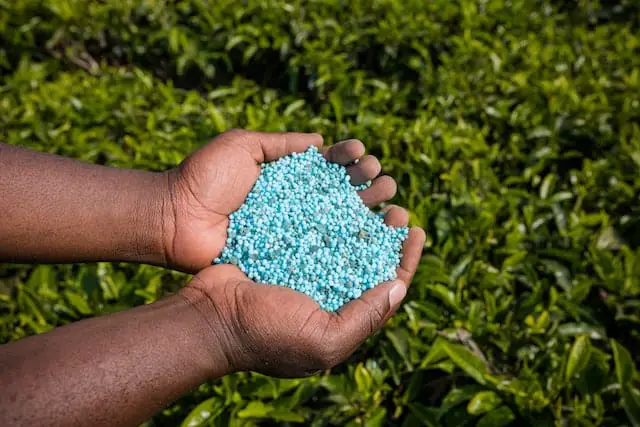
Bromeliads are relatively low-maintenance plants that do not require frequent fertilization. However, providing the right nutrients is essential for healthy growth and vibrant colors.
When it comes to fertilizing bromeliads, it’s important to avoid overfertilization, which can cause leaf tips to turn brown or black. Overfertilization can also lead to root burn, which can be fatal to the plant.
The best way to fertilize bromeliads is to use a water-soluble fertilizer with a balanced N-P-K ratio of 17-8-22 or 20-20-20. It’s recommended to dilute the fertilizer to half the strength recommended on the label and apply it to the soil or directly to the central cup of the plant.
It’s important to note that bromeliads are not heavy feeders and do not require frequent fertilization. In fact, too much fertilizer can be harmful to the plant. It’s recommended to fertilize bromeliads once a month during the growing season and reduce or stop fertilization during the winter months when the plant is dormant.
In addition to fertilizer, bromeliads also require other essential nutrients, including magnesium, calcium, and iron. These nutrients can be provided through the use of a specialized bromeliad fertilizer or by adding a supplement to the soil.
Overall, providing the right nutrients is essential for healthy growth and vibrant colors in bromeliads. However, it’s important to avoid overfertilization and provide the right amount of nutrients at the right time to ensure the best results.
Bromeliad Life Cycle and Care
Bromeliads are tropical plants that come in a wide variety of shapes, sizes, and colors. They have a unique life cycle that involves producing a central rosette of leaves and a flower spike that emerges from the center. The flower spike produces small flowers that bloom in succession, and the foliage can last for several years.
Bromeliads are relatively easy to care for and require minimal maintenance. They prefer bright, indirect light and well-draining soil. Overwatering is a common issue that can lead to root rot and other problems.
It is important to allow the soil to dry out between watering and to avoid getting water on the leaves, as this can lead to fungal growth.
One of the most exciting aspects of bromeliad care is the production of pups. These are small offshoots that emerge from the base of the mother plant and grow into new plants.
Pups can be left in place to form a clump or removed and potted separately. It is important to wait until the pups are well-established before separating them from the mother plant.
As bromeliads age, their foliage may begin to turn brown or yellow. This is a natural part of the plant’s life cycle, and it is important to dispose of the plant properly once it has reached the end of its life.
The flower spike will typically die back after the plant has reached full bloom, and the foliage will gradually lose its vibrant colors and become a dark green.
To care for bromeliad leaves, it is important to keep the blades clean and free of dust and debris. This can be done by wiping the leaves with a damp cloth or gently rinsing them with water. It is also important to sterilize any cutting tools before using them on the plant to prevent the spread of disease.
Overall, bromeliads are a beautiful and low-maintenance addition to any indoor or outdoor space. With proper plant care, they can thrive for many years and provide a stunning display of foliage and flowers.
Frequently Asked Questions
How to trim bromeliad leaves?
Trimming bromeliad leaves is not recommended unless the leaf is completely dead and brown. If you need to remove a brown leaf, use a sharp and clean pair of scissors or pruning shears to cut the leaf as close to the base as possible without damaging the plant.
Should I cut brown leaves off bromeliad?
If the leaf is completely brown and dead, it is safe to cut it off as close to the base as possible without damaging the plant. However, if the leaf is only partially brown, it may still be contributing to the plant’s growth and should be left alone.
Why are the end of my bromeliad leaves turning brown?
The ends of bromeliad leaves can turn brown due to a variety of reasons, including overwatering, underwatering, low humidity, too much direct sunlight, or natural aging of the plant.
Why does my bromeliad have brown tips?
Brown tips on bromeliad leaves can be caused by a lack of water, low humidity, too much direct sunlight, or natural aging of the plant. It is important to determine the underlying cause to prevent further damage to the plant.
How do I know if my bromeliad is overwatered?
Overwatering can cause the leaves of a bromeliad to turn brown and mushy. To determine if your bromeliad is overwatered, check the soil moisture level by sticking your finger about an inch into the soil. If the soil feels consistently wet, your plant may be overwatered.
How often should I water a bromeliad?
The frequency of watering a bromeliad depends on several factors, such as the humidity level, temperature, and the size of the plant. In general, it is recommended to water bromeliads once a week or when the soil feels dry to the touch.
Avoid letting the plant sit in standing water, as this can lead to root rot.

Hey, I’m Lisa and I’ve been an avid gardener for over 30 years. I love writing, talking and living in the garden! Feel free to connect with me on my socials below

